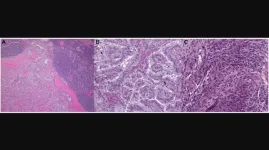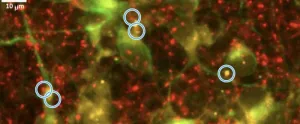(Press-News.org) Statement Highlights:
Despite significant advances in research, education, clinical practice and community-based programs, survival from cardiac arrest remains low.
Significant disparities also exist in cardiac arrest outcomes.
This scientific statement specifically identifies impact goals to achieve or exceed by 2030 to improve cardiac arrest for all people.
DALLAS, January 22, 2024 — Only 10% of people who experience a cardiac arrest survive.[1] In new challenge goals outlined in the American Heart Association Emergency Cardiovascular Care 2030 Impact Goals and Call to Action to Improve Cardiac Arrest Outcomes, the American Heart Association’s volunteer advisory Emergency Cardiovascular Care Committee makes the case for doubling survivorship to 20%. New 10-year goals for the nation, published today in the Association’s flagship peer reviewed journal Circulation, can be achieved by increasing the rate of bystander cardiopulmonary resuscitation (CPR) to more than 50% and increasing the frequency of defibrillation (AED use) for out-of-hospital cardiac arrest before emergency services arrive; survival after cardiac arrest whether at home or in the hospital, and neurologically intact survival (surviving with proper brain function).
Equity-focused goals are also key to improving cardiac arrest survival outcomes with a specific focus on racial/ethnic and other historically marginalized groups and communities with low socioeconomic status.
The volunteer expert committee identifies clinical goals every 10 years that are aligned with the Association's broader mission while seeking to provide guidance for scientists, health care professionals, the public, policymakers and others to focus on improving outcomes from cardiac arrest. This new, bold goal – announced during the Association’s centennial year – highlights its focus on saving and improving lives.
“We hope these goals will serve as an aspirational and achievable road map for improved heart health and better survival rates in all communities and for all people,” said Raina M. Merchant, M.D., M.S.H.P., FAHA, American Heart Association volunteer chair of the statement’s writing committee and a professor of emergency medicine at the University of Pennsylvania’s Perelman School of Medicine. “Achieving them will truly take a collaboration among health care professionals, first responders and the public and will require supporting registries, such as CARES and Get With the Guidelines, to help with tracking and reporting about the many factors that impact cardiac arrest incidence, treatment and outcomes.”
Currently, 90% of people who experience cardiac arrest outside of a hospital die, in part because they do not receive CPR more than half of the time.[2] To save more lives from the approximately 350,000 cardiac arrests that occur outside of the hospital every year, increasing the number of people who respond to cardiac arrest by calling 911, delivering high-quality CPR and getting and using an AED as soon as it is available are crucial to survival outcomes.[3]
Black or Hispanic adults who experience cardiac arrest outside a hospital setting are substantially less likely to receive lifesaving care from a bystander.[4] The Association is working to change this by improving access to lifesaving CPR training in these communities.
The Association’s focus on CPR training and education has already shown improvement in bystander willingness to provide lifesaving care. In a 2023 consumer survey, over half of the participants said they would perform either CPR or Hands-Only CPR and that their confidence level in performing CPR has improved from 2021.[5] Immediate CPR and defibrillation are key to doubling the survival rate of cardiac arrest by 2030.
An American Heart Association scientific statement is an expert analysis of current research and may inform future clinical practice guidelines. See the full statement for more in-depth detail and specific numbers on these Emergency Cardiovascular Care 2030 Impact Goals.
This scientific statement was prepared by the volunteer writing group on behalf of the American Heart Association’s Emergency Cardiovascular Care Committee. American Heart Association scientific statements promote greater awareness about cardiovascular diseases and stroke issues and help facilitate informed health care decisions. Scientific Statements outline what is currently known about a topic and what areas need additional research. While scientific statements inform the development of guidelines, they do not make treatment recommendations. American Heart Association guidelines provide the Association’s official clinical practice recommendations.
The Association receives funding primarily from individuals; foundations and corporations (including pharmaceutical, device manufacturers and other companies) also make donations and fund specific Association programs and events. The Association has strict policies to prevent these relationships from influencing the science content. Revenues from pharmaceutical and biotech companies, device manufacturers and health insurance providers and the Association’s overall financial information are available here.
Additional Resources:
Interview and photos are available on the right column of the release link.
AHA health initiative: Join the Nation of Lifesavers
AHA health information: Learn the difference between cardiac arrest and heart attack
Learn Hands-Only CPR: https://cpr.heart.org/en/cpr-courses-and-kits/hands-only-cpr
Learn how to improve cardiac arrest survival in your community: Visit https://www.yourethecure.org/nationoflifesavers
AHA Scientific Statement: Ten Steps Toward Improving In-Hospital Cardiac Arrest Quality of Care and Outcomes (Nov. 2023)
The American Heart Association turns 100
Follow AHA/ASA news on X (formerly known as Twitter) @HeartNews
###
About the American Heart Association
The American Heart Association is a relentless force for a world of longer, healthier lives. We are dedicated to ensuring equitable health in all communities. Through collaboration with numerous organizations, and powered by millions of volunteers, we fund innovative research, advocate for the public’s health and share lifesaving resources. The Dallas-based organization has been a leading source of health information for a century. During 2024 - our Centennial year - we celebrate our rich 100-year history and accomplishments. As we forge ahead into our second century of bold discovery and impact, our vision is to advance health and hope for everyone, everywhere. Connect with us on heart.org, Facebook, X or by calling 1-800-AHA-USA1.
For Media Inquiries and AHA/ASA Expert Perspective: 214-706-1173
Sarah D. Williams: 214-706-1156; sarah.d.williams@heart.org
For Public Inquiries: 1-800-AHA-USA1 (242-8721)
heart.org and stroke.org
[1] https://www.ahajournals.org/doi/epdf/10.1161/CIR.0000000000001123
[2] Hansen, Carolina Malta. "Association of Bystander and First‐Responder Efforts and Outcomes According to Sex: Results From the North Carolina Heart Rescue Statewide Quality Improvement Initiative." Journal of the American Heart Association 7, no. 18 (2018): e009873. https://doi.org/10.1161/JAHA.118.009873
[3] Tsao, Connie W. "Heart Disease and Stroke Statistics—2023 Update: A Report From the American Heart Association." Circulation 147, no. 8 (2023): e93–e621. https://doi.org/10.1161/CIR.0000000000001123
[4] Garcia, R. Angel. "Racial and Ethnic Differences in Bystander CPR for Witnessed Cardiac Arrest." New England Journal of Medicine, no. 387 (2022): 1569-1578. https://doi.org/10.1056/NEJMoa2200798
[5] 2021 and 2023 Elevance Health Foundation surveys available upon request.
END
Emergency cardiovascular care impact goal outlines 3 target needs
American Heart Association Scientific Statement outlines specific calls to action to improve cardiac arrest outcomes by 2030
2024-01-29
ELSE PRESS RELEASES FROM THIS DATE:
Genetic alterations in thyroid cancer mediate resistance to BRAF inhibition and anaplastic transformation
2024-01-29
“An improved understanding of the molecular basis of thyroid cancer has led to the development of new targeted agents.”
BUFFALO, NY- January 29, 2024 – A new research perspective was published in Oncotarget's Volume 15 on January 24, 2024, entitled, “Genetic alterations in thyroid cancer mediating both resistance to BRAF inhibition and anaplastic transformation.”
In this new paper, researchers Mark Lee and Luc GT Morris from New York Presbyterian Hospital and Memorial Sloan Kettering Cancer Center discuss thyroid cancer. A subset of thyroid cancers present at advanced stage or with dedifferentiated histology and have limited response to standard therapy. ...
Psychology research: Women more sensitive to cocaine
2024-01-29
Previous studies focused on cocaine use have found that women are more likely than men to develop an addiction, try cocaine at a younger age, use larger amounts of the drug, and suffer from overdose.
Now, a new study from researchers at The University of Texas at Arlington in the journal Pharmacology Biochemistry and Behavior finally validates what scientists have long suspected: The female sex hormone estradiol (a synthetic version of the naturally occurring estrogen) is responsible for why women are more susceptible to cocaine addiction than men.
“For the first time, we have shown that estradiol enhances the cocaine-conditioned reward,” said Linda Perrotti, ...
When Chinese citizens are surveyed anonymously, support for party and government plummets
2024-01-29
By Ileana Wachtel January 29, 2024
Chinese citizens who rarely voice open criticism of their government reveal stronger negative views when they can answer questions anonymously, according to a new study published in The China Quarterly.
The study by researchers at the USC Dornsife College of Letters, Arts and Sciences shows an enormous drop in citizen support for the Chinese Communist Party (CCP) and government policies when citizens are surveyed using a method that hides their identities and makes them feel more anonymous than a typical survey.
Why ...
Students are missing more school, and school nurses may be well-positioned to help
2024-01-29
COLUMBIA, Mo. -- School nurses are more than just health care heroes. They also play a key role in identifying students who are at risk for chronic absenteeism — a growing problem that diminishes academic success and can hurt students’ health and lead to a variety of negative long-term life outcomes.
A recent study by a University of Missouri researcher found that school nurses are often well-positioned to identify students at-risk for chronic school absenteeism. The finding could help schools implement assessments and interventions to ultimately better support students ...
Re-energizing mitochondria to treat Alzheimer’s disease
2024-01-29
LA JOLLA, CA — Nerve cells in the brain demand an enormous amount of energy to survive and maintain their connections for communicating with other nerve cells. In Alzheimer’s disease, the ability to make energy is compromised, and the connections between nerve cells (called synapses) eventually come apart and wither, causing new memories to fade and fail.
A Scripps Research team, reporting in the journal Advanced Science on January 18, 2024, has now identified the energetic reactions in brain cells that malfunction and lead to neurodegeneration. By using a small molecule ...
Rice scientists pull off quantum coup
2024-01-29
HOUSTON – (Jan. 29, 2023) – Rice University scientists have discovered a first-of-its-kind material, a 3D crystalline metal in which quantum correlations and the geometry of the crystal structure combine to frustrate the movement of electrons and lock them in place.
The find is detailed in a study published in Nature Physics. The paper also describes the theoretical design principle and experimental methodology that guided the research team to the material. One part copper, two parts vanadium and four parts sulfur, the alloy features a 3D pyrochlore lattice consisting ...
Spatial model predicts bumblebee exposure to pesticide use
2024-01-29
It has long been known that agricultural pesticides are one of the greatest threats to bees and other essential pollinators. What farmers have lacked is an understanding of how different pesticides, applied at various times on a variety of crops, affect the risk of exposure to bees living near the fields.
Researchers have drawn from real-world data to try to address this gap, developing and testing a spatial model for predicting pesticide exposure in bumblebees. The journal Science of the Total Environment published the work, based on the interactions of the yellow-faced bumblebee (Bombus vosnesenskii) ...
A firm eye on the proboscis
2024-01-29
EMBARGOED UNTIL MONDAY, 29 JANUARY 2024, 21:00 CET (20:00 LONDON TIME, 15:00 U.S. EASTERN TIME)
Have you ever seen a hummingbird hawk moth? When people encounter this moth for the first time, they are usually intrigued: Looking like a cross between a butterfly and a bird – hence the name – this animal has the amazing ability to hover like a helicopter for long periods. On closer inspection, another feature of the hummingbird hawk moth quickly catches the eye: the spiralling curled proboscis, which is as long as the entire animal.
The moth uses its proboscis ...
Viral protein fragments may unlock mystery behind serious COVID-19 outcomes
2024-01-29
There are many lingering mysteries from the COVID-19 pandemic. For instance, why does SARS-CoV-2, the virus behind the disease, cause severe symptoms in some patients, while many other coronaviruses don’t? And what causes strange symptoms to persist even after the infection has been cleared from a person’s system?
The world may now have the beginning of answers. In a study published today in the journal Proceedings of the National Academy of Sciences, a UCLA-led multidisciplinary research team explores one way that COVID-19 turns the ...
Endangered seabird shows surprising individual flexibility to adapt to climate change
2024-01-29
New research finds that individual behavioural flexibility and not evolutionary selection is driving the northward shift of Balearic shearwaters.
The findings were revealed through a decade-long study which tagged individual birds.
The results indicate that individual animals may have greater behavioural flexibility to respond to climate change impacts than previously thought.
How individual animals respond to climate change is key to whether populations will persist or go extinct. Many species are shifting their ranges as the environment warms, but up to now the mechanisms underlying ...
LAST 30 PRESS RELEASES:
Numbers in our sights affect how we perceive space
SIMJ announces global collaborative book project in commemoration of its 75th anniversary
Air pollution exposure and birth weight
Obstructive sleep apnea risk and mental health conditions among older adults
How talking slows eye movements behind the wheel
The Ceramic Society of Japan’s Oxoate Ceramics Research Association launches new international book project
Heart-brain connection: international study reveals the role of the vagus nerve in keeping the heart young
Researchers identify Rb1 as a predictive biomarker for a new therapeutic strategy in some breast cancers
Survey reveals ethical gaps slowing AI adoption in pediatric surgery
Stimulant ADHD medications work differently than thought
AI overestimates how smart people are, according to HSE economists
HSE researchers create genome-wide map of quadruplexes
Scientists boost cell "powerhouses" to burn more calories
Automatic label checking: The missing step in making reliable medical AI
Low daily alcohol intake linked to 50% heightened mouth cancer risk in India
American Meteorological Society announces Rick Spinrad as 2026 President-Elect
Biomass-based carbon capture spotlighted in newly released global climate webinar recording
Illuminating invisible nano pollutants: advanced bioimaging tracks the full journey of emerging nanoscale contaminants in living systems
How does age affect recovery from spinal cord injury?
Novel AI tool offers prognosis for patients with head and neck cancer
Fathers’ microplastic exposure tied to their children’s metabolic problems
Research validates laboratory model for studying high-grade serous ovarian cancer
SIR 2026 delivers transformative breakthroughs in minimally invasive medicine to improve patient care
Stem Cell Reports most downloaded papers of 2025 highlight the breadth and impact of stem cell research
Oxford-led study estimates NHS spends around 3% of its primary and secondary care budget on the health impacts of heat and cold in England
A researcher’s long quest leads to a smart composite breakthrough
Urban wild bees act as “microbial sensors” of city health.
New study finds where you live affects recovery after a hip fracture
Forecasting the impact of fully automated vehicle adoption on US road traffic injuries
Alcohol-related hospitalizations from 2016 to 2022
[Press-News.org] Emergency cardiovascular care impact goal outlines 3 target needsAmerican Heart Association Scientific Statement outlines specific calls to action to improve cardiac arrest outcomes by 2030






